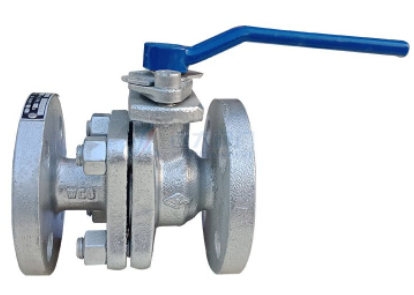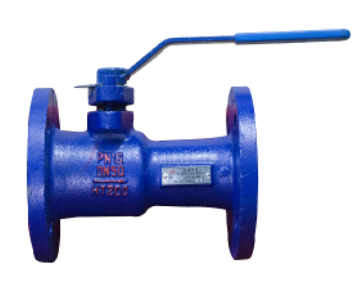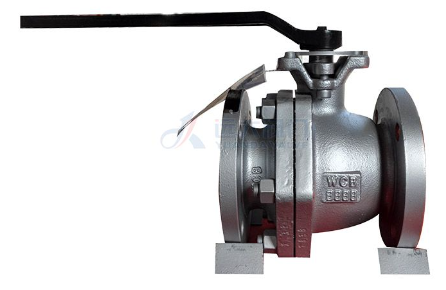Installation And Maintenance of Ball Valves
The valve is a control component in the fluid-conveying system. It has the functions of cut-off, regulation, diversion, prevention of reverse flow, stabilization, diversion, and adjustment of medium flow balance.
The valve is also one of the most typical pieces of equipment in the thermal system. The quality of the valve and whether the valve is selected reasonably according to the characteristics of the valve will play a decisive role in the heating quality.
Since the valves are all laid in-ground wells, they are not easy to be detected because they run, leak, drip, and leak. Generally, they can only be discovered when the user complains, the inspection is found, or the equipment is damaged.
The ball valve came out in the 1950s. It is a valve that has been used more and more in thermal systems in recent years. Its superior performance is unattainable by other valves. It has no fluid resistance, is lightweight, has sealing performance, zero leakage, and opens and closes. The advantages of fast switching, free from medium erosion and long service life, have gradually gained the favor of enterprise valve selection. However, how to perform routine maintenance and repair of valves in daily operation has also become a work that cannot be ignored by heating companies.

By understanding the working principle of the valve and the characteristics of the product, as well as the operation method and troubleshooting, the relevant production operation system can be formulated in the company's normal production to ensure the safe operation of the valve equipment.
The correct use, installation, and maintenance of ball valves are very important, and it is also content that heating companies must refer to when formulating operating procedures. Scientific management and maintenance of ball valves during the construction period can not only ensure safety but also reduce construction and operation management.
Pay attention to the following aspects:
1)Use the correct method to load and unload the valve to avoid mechanical damage to the valve. When lifting the valve, the lifting strap cannot be tied to the valve stem or actuator for lifting. If the valve is operated in violation of regulations, it will cause the valve stem to bend, the valve stem seal failure and the turbine box to be destroyed.
2)Before the valve leaves the factory, blind plates or caps should be sealed at both ends of the valve to prevent water, sand, and other impurities from entering the valve cavity during transportation and on the construction site, causing damage and corrosion to the seal.
3)At the construction site, the valves should be placed neatly and should not be placed randomly, which will cause breakage and damage to the valve drain valve or grease injection valve.
4)Before the welding construction of the fully welded ball valve, confirm that the valve is welded in the fully open position to avoid the welding spatter from causing damage to the ball and scratching the sealing surface. The welding temperature between the valve seat is controlled at 140 degrees.
5)After completing the water pressure test, the water in the valve cavity should be drained to prevent corrosion and freezing.

Valve Installation
Ball valves can be installed in any orientation. However in bigger sizes to reduce the load on the valve caused by the actuator or gearbox trying to pull away it may be necessary to install the drive shaft vertically. Electric actuators usually require vertical installation.
Verify the material of the ball valve body, seat, and ball before installation. Ensure that there are no defects caused by storage or transportation.
Verify the pressure rating of the valve vs the application requirement.
Verify the temperature rating of the valve vs the application requirement.
Verify the valve thread (BSP, NPT, socket weld ANSI), flange (ANSI 150, ANSI 300, etc), or solvent weld (BLP schedule 40) vs the application requirement.
Complete all welding works before valve installation and be sure the flange has cooled to ambient temperature before installing the ball valve.
Make sure there is no welding residue, waste, rust, or other debris in the pipe before installation. Wash with water or a mild detergent if needed.
Clean the surface of the flange or pipe thread that will come in contact with the ball valve to ensure it is free of dust and debris. Wash with water or a mild detergent if needed.
Make sure there is no warpage of the flange or misalignment of the ball valve in relation to the flange.
Support for the valve was necessary to reduce the load on the piping (important on the bigger valve and actuator assemblies).
For 2-way and 3way threaded valves (BVS, BVF8, BLS3) it will be necessary for metal pipework to allow for removal of the valve for maintenance by having a pipe union installed. 3 piece threaded and 2-piece flanged ball valves can be removed for maintenance without disturbing the pipework.
Tighten the bolts on a flanged valve one at a time doing it in stages so even pressure is applied and a seal is formed between the valve and flanges.
Once the installation is complete, operate the valve several times to ensure it is free from impingement and rotates through its full 90-degree operation.

Daily maintenance and maintenance of ball valves
1)For ball valves, formulate periodic inspections of the valve's sealing performance and check through the drain valve. If there is internal leakage, follow the procedure.
2)According to the frequency of valve movement, inject a certain amount of grease into the valve seat. Generally, an appropriate amount of grease should be injected after the valve is moved once, and the amount of each injection is 1/8 of the sealing system, so as to avoid impurities in the pipeline to the greatest extent. The back cavity of the valve seat affects the movement of the valve seat, thereby causing seal failure, while ensuring that the sealing surface is always in a lubricated state, prolonging the service life.
3)For valves with little movement, open and close operations should be carried out once a year, and a certain amount of grease and cleaning fluid should be injected to avoid dry grinding when the ball is moving and reduce the valve operating torque.
4)Before the winter, the ball valve should be maintained. The key point is to drain the water in the valve cavity and the water in the actuator to avoid freezing and freezing in winter, which will affect the function of use.
5)Add wear-resistant grease to the valve worm gear head actuator every year, regularly check the valve stem seal, remove rust, and do external protection.
In order to improve the reliability of the valve and prolong its service life of the valve, it is very important to do early maintenance and supervision work. Many problems can be avoided by early detection and timely treatment.
Therefore, in the management and maintenance of the ball valve, not only must professional training be strengthened to ensure that the maintenance is scientific, standardized, and safe, but also the concept must be changed, preventive maintenance management, and the safety of the heating system must be ensured to ensure the heating quality.
We are a ball valve supplier. If you are interested in our products, please contact us now!
- Category:
- Business
- 31 Mar, 2023
- 1155 views
- No comments





